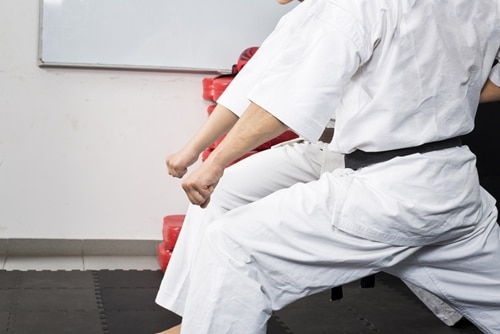The Best Martial Arts for Self-Defense
There are many reasons that people enroll in martial arts classes. Some people are looking to get in shape, others are wanting to participate in a stress-relieving activity. One of the most popular reasons, however, is that people are looking to learn how to defend themselves. While most martial arts have some aspect of self-defense to them, some varieties are better for this purpose than others. Here are a few of the best martial-arts classes to help step up your self-defense game:
Krav Maga
There are a lot of myths floating around about Krav Maga. While some myths may be exaggeration, Krav Maga is a part of the official training of the Israeli military. According to How They Play, this style of fighting originally took inspiration from boxing, karate and wrestling, but modern teachings of it have worked in Muay Thai and Brazilian jiujitsu.
The Practice of Krav Maga
While many styles of martial arts focus heavily on either defense or attacks, Krav Maga is one of the rare ones that uses the technique “bursting.” Rather than blocking your opponent and responding, bursting is the process of blocking and attacking at the same time. This will catch any attacker on the street off-guard – unless he or she is also trained in Krav Maga! Since this is taught in the military, there is also a lot of attention paid to disarming your opponent, and maybe even using his or her weapon to stay safe. This will come in handy if you’re approached on the street by a person with a gun or knife, because you not only neutralize the threat, but put him or her into a vulnerable position. This training also places an emphasis on your attacker’s most vulnerable points – the eyes, face, throat, neck, fingers and groin.
Jiujitsu
If you begin to practice jiujitsu and realize that it seems similar to Krav Maga, that’s because Krav Maga has roots in jujitsu teachings. Judo and aikido has roots in this style of martial arts as well. Japanese samurais developed jiujitsu so they could defend themselves if unarmed. While it focuses on defense and attack, the most notable difference between jiujitsu and other styles of martial arts is the fact that it uses the opponent’s energy and momentum against him or her.
Jiujitsu instructors also spend a lot of time teaching you how to place your attackers in joint locks, which can immobilize them. Brazilian jiujitsu is similar, but not exactly the same. This style is for people who aren’t strong enough to pull off a lot of the strength-based moves in traditional jiujitsu. Many of Brazilian jiujistu’s fight moves take place on the ground, incorporating chokes and joint locks.
Aikido
Aikido is a Japanese martial art that’s incredibly effective on the street, but also takes a lot of training. This art derivates from jiu jitsu practices. In addition to jiu-jistu’s joint locks, aikido focuses heavily on your movements. It mimics how your body may move in a sword fight. It’s a graceful martial art that uses little striking, but instead teaches you to use your opponent’s strength against him or her. Unlike Krav Maga, aikido is a graceful martial art and the self defense purposes certainly come in handy. You’ll learn a lot about balance and control.
